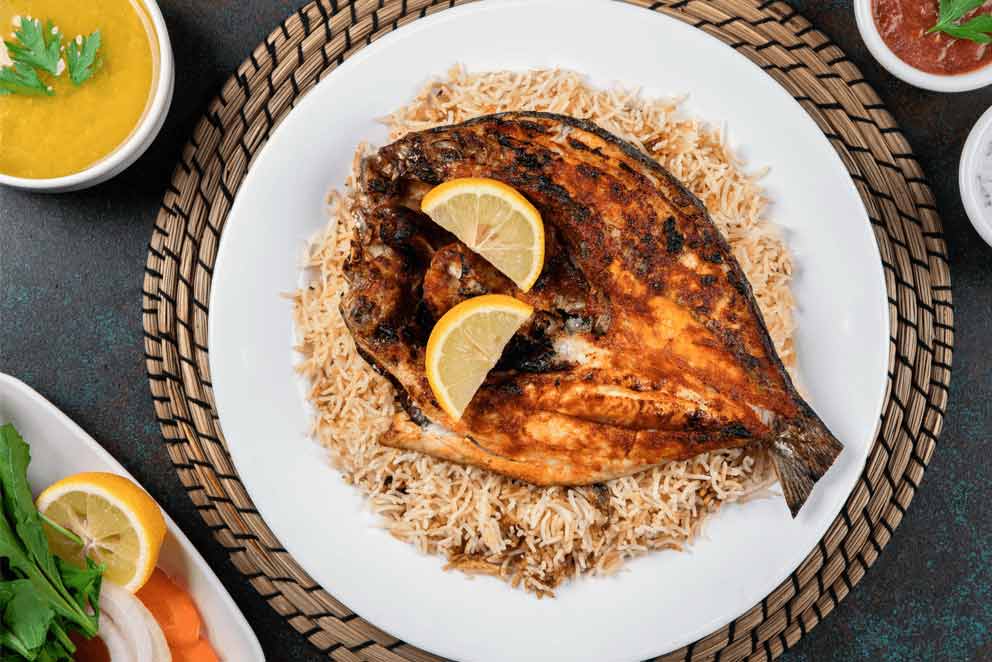
A Guide to Traditional Dishes and Local Restaurants in Oman
When it comes to food, Oman is a country that truly offers something for everyone. The cuisine is a reflection of its rich culture and history, with a blend of flavors and ingredients that come from the country's Arab, Indian, and African influences. Whether you're a foodie looking to explore new flavors or simply a curious traveler looking to experience the local culture, Oman's food scene is sure to impress.
The National Dish: Machboos
One of the most popular traditional dishes in Oman is machboos, a savory rice dish that is typically made with chicken or lamb, onions, tomatoes, and a blend of spices such as saffron, turmeric, and cumin. Served with a side of plain yogurt, machboos is often considered the national dish of Oman and is a must-try for any food lover.
Comfort Food: Harees
Another popular traditional dish is harees, a porridge-like dish made from wheat and meat, usually chicken or lamb. Cooked for hours until it becomes a thick, creamy consistency, harees is often served for breakfast or as a comfort food.
Seafood Delights from the Gulf of Oman
Seafood is another highlight of Omani cuisine. The Gulf of Oman is home to a wide variety of fish and shellfish, and local restaurants often serve the freshest catch of the day. Grilled fish, such as kingfish or hammour, is a popular choice, as well as traditional Omani dishes like shuwa, a slow-cooked meat dish that is typically made with lamb or goat and cooked underground. Shuwa is marinated in a special blend of spices, wrapped in banana leaves, and then buried in a sandpit to cook slowly for up to 48 hours. The result is tender, flavorful meat that melts in your mouth.
Sweet Treats: Omani Desserts
For those with a sweet tooth, Omani desserts are a must-try. Luqaimat, small dumplings made from dough and honey, are a popular street food, and balaleet, a sweet vermicelli pudding, is a traditional dessert often served during Ramadan. Another beloved dessert is Omani halwa, a sweet and sticky confection made from semolina, sugar, and ghee, flavored with rosewater, saffron, and cardamom. Halwa is often enjoyed with a cup of Omani coffee, which is infused with cardamom and served with dates.

Dining Out: Traditional and Modern
When it comes to where to eat in Oman, there is no shortage of options. From traditional Omani restaurants, known as "majalis," to local seafood spots and international restaurants, the country offers a wide variety of dining options. Some of the most popular local restaurants include Al Angham in Muscat, which serves traditional Omani dishes, and Al Khodariyah in Salalah, which is known for its seafood. Majlis Al Bahja in Muscat is another favorite, offering a cozy atmosphere and a menu full of Omani delicacies.
International Flavors in Oman
In addition to traditional restaurants, there are also a number of international restaurants in Oman, such as Indian, Chinese, and Italian establishments. The capital city of Muscat is home to a number of high-end restaurants, such as Al Mashuai and Al Tanoor, which offer an upscale dining experience and stunning views of the city. These restaurants often feature a fusion of Omani flavors with international cuisines, providing a unique culinary experience.
The Magic of Omani Spices
When it comes to Omani cuisine, it is all about the spices. The use of spices such as saffron, cinnamon, and cardamom are prevalent in many traditional dishes, giving them a unique and distinct flavor. One of the most popular dishes in Oman is shuwa, a slow-cooked meat dish that is traditionally cooked underground. The meat, usually lamb or goat, is marinated in a mixture of spices and then wrapped in banana leaves before being buried in a pit and cooked for several hours. The result is a tender and flavorful meat that is usually served with rice.
Machboos: A Staple Dish
Another popular dish is machboos, also known as kabsa. This is a rice dish that is cooked with meat, usually chicken or lamb, and a variety of spices such as saffron, cinnamon, and cardamom. It is often served with a tomato and onion-based sauce called raita and is a staple in many Omani households.

Seafood Staples in Omani Cuisine
Fish is also a staple in Omani cuisine, with many traditional dishes featuring fish as the main ingredient. One such dish is samak masgouf, which is a whole grilled fish that is marinated in a mixture of spices and served with rice and vegetables. The Gulf of Oman provides a bounty of fresh seafood, making it a prime destination for seafood lovers.
Indulging in Omani Desserts
For those with a sweet tooth, Oman has a variety of delicious desserts to choose from. Luqaimat is a traditional Omani dumpling that is often served with dates and honey. Another popular dessert is halwa, a sweet and sticky pudding that is made with semolina and is often flavored with cardamom.

Local Dining Experiences
When it comes to dining out, Oman has a wide range of local restaurants that offer traditional Omani dishes. Many of these restaurants are family-run and offer a casual and friendly atmosphere. Some popular restaurants include Al Angham in Muscat, which is known for its shuwa, and Al Khodariyah in Nizwa, which is famous for its machboos.
International Cuisine Options
In addition to traditional Omani restaurants, there are also a number of international restaurants in Oman that offer a variety of cuisines. Some popular options include Indian, Chinese, and Italian restaurants.
Conclusion: A Diverse Culinary Experience
Overall, Oman's food scene is a delicious and diverse experience that is not to be missed. Whether you're a fan of traditional Omani dishes or prefer international cuisine, there's something for everyone to enjoy. So, don't forget to indulge your taste buds while exploring the beautiful country of Oman.